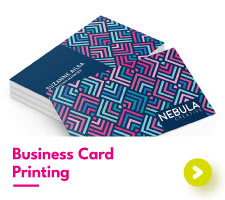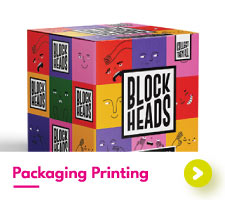Understanding Japanese Business Card Etiquette
Business cards, known as Meishi in Japan, are one of the most important aspects of Japanese business culture. The Meishi is the first impression respective businesses will have of your company, so it is important that your business cards look professional and are exchanged in the appropriate manner.
With Japan placing a strong cultural emphasis on Meishi, having the correct understanding of business cards in Japanese culture can make or break your business interactions.
The Importance of Business Cards in Japan
At the Ebisu Shrine in Kyoto's Higashiyama Ward, a ceremony takes place every year, known as the business card Thanksgiving festival. This event, deeply rooted in Shinto traditions, involved the burning of about 20,000 business cards that were no longer needed. Collected from various parts of Japan, these cards were ceremonially placed in a fire by Shinto priests and participants. The ritual was a gesture of thanks for past connections made through these cards, and prayers were offered for future encounters.
The practice is based on a longstanding belief in Japan that a person's name on an object, such as a business card, symbolises the individual themselves. Recognising this, the shrine established a special mound for business cards in 1978, where people could dispose of their outdated or unused cards, particularly those from individuals who have moved to different positions or roles. Each year in September, this Thanksgiving ceremony draws members of the printing industry, who participate in the rituals and contribute their own business cards to the pyre.
So, as you can see, the business card carries great respect in Japan. So how do you get the design right? Let’s explore!
Example of a Japanese Business Card Format
Before we begin to understand the correct Japanese business card etiquette, we must first know about the Japanese business card format. It is important that your business card design is easy for the receiver to understand, whilst also displaying all the appropriate information in order of importance.
The information that you must include on your Meishi for the correct Japanese business card format is:
Company Name and Logo


The first thing to appear on your business card is your company name. It is commonly situated at the top left of the card in a large and legible font. The Japanese business card format ranks your company as most important in the hierarchy.
Full Name and Title


Following your company name should be your own name along with your title. Your name and title are to be positioned below your company name on the left-hand side of the card, with your title placed horizontally on the upper left side of your name.
Company Department


If appropriate, your department should follow your name in a smaller font.
Company Location


Your company location will follow your name and can be found on the right-hand side of your card. It is important that your company’s location is in the language of the area your country is located. Translating your address into another language would not be useful for anyone attempting to contact you via mail.
Company Phone Number


After your company address is your company phone number. If you have more than one phone number associated with your company they must be displayed in the order of relevance to the receiver, with each number labelled as to which is which.
Company Addresses


The last thing you must include on your card is your company email addresses, web addresses and social media handles. Each address must be in the correct language, it’s no use translating your email address into Japanese if it then cannot be used to contact you. The social media handles you include must be relevant and up to date.
Any further information that you deem to be important, such as a company slogan or QR code, should also be included. Make sure that you avoid making your business card appear cluttered or overly busy, your card must be easy to read and understand.
Japanese Business Card Size
The standard Japanese business card size is 91mm x 55mm and is designed to fit within a business card holder. The business card holder is also considered to be an important element of business cards in Japanese culture and should be carried with you in business meetings. In comparison, the standard UK business card size is 85mm x 55mm, and it’s perfectly acceptable to place a received business card in your pocket.
Japanese-English Business Cards
When doing business in Japan, it is commonplace for English-speaking companies to have a business card in both Japanese and in English. These Japanese-English business cards have one side in Japanese and the other side in English. Not all the information on the Japanese side of your business card needs to be translated into Japanese. If your company has an English address translating it into Japanese would not be very helpful for anyone attempting to send any mail to you.


The Japanese Business Card Exchange
Now that we know what to put on your Meishi, we must now learn the correct etiquette for the Japanese business card exchange. The cultural “rules” surrounding Meishi in Japan are more complex than those in the West and learning the correct Japanese business card etiquette can help to create a good first impression for your company.
Before entering a business environment, you must be prepared. Ensure that before the Japanese business card exchange, you have brought enough cards with you to be able to hand out one to each person in the meeting. Carrying more cards than you require is to be advised as not having enough cards can be seen as rude or ill-prepared. Make sure that the cards are clean, with no marks or worn edges.
Have your cards ready with you. Business card cases are commonplace for keeping your contact cards to help keep them organised and are used to store the cards of the people you meet.
Now you can present your cards. Introduce yourself with your company name and your own name whilst bowing to the person you are speaking to. Offer them your business card with both hands with the Japanese side facing up and towards the person so that they can read it. Make sure to not cover your company name or logo when presenting your card.
When accepting a card, take it with both hands and hold it no higher than chest level. Make sure to thank the person you have taken a card from.
Once you have received a card take some time to examine the contents. Understanding the information presented will help with your interactions with this person. If there is anything you are unsure of it is not rude to ask. For one-on-one interactions, you can then place the business card on your cardholder. When interacting with multiple different people you should place the card belonging to the person of the highest rank on your business card holder, and the remaining cards in rank order on the table in front of you.
What Not to Do When Exchanging Business Cards in Japan
The “rules” surrounding the Meishi Japanese business card exchange can appear to be daunting at first. It is understandable if you do not get everything straight away. Making a conscious effort to be respectful within a business meeting will give a good impression of your company and will help you form strong business relationships. There are some actions you must avoid doing when exchanging business cards in Japan which can be detrimental to your business interactions.
Writing on a card that you have received can be seen as a sign of disrespect and can cause offence to the other party. The presenter of the card will have made sure that all the information you need to know is already on their business card. If you need to make notes you can write them on your own card but be sure to not hand out cards with writing on them.
When receiving a card, the best place to put it is within your business cardholder. The last thing you want to do is put an individuals’ business card in your pocket or wallet. This indicates that the card shows no importance to you and can be seen as a sign that you are disregarding their business, a big no-no in Japanese business card culture.
Similarly, to writing on a received business card, any actions that may cause damage to another person’s business card is seen as a lack of respect and care towards their company.


Print Your Own Japanese-English Business Cards
Now you know the name for business card in Japan and how to create, exchange and receive Japanese Meishi. The cultural “rules” surrounding business card presentation in Japan may seem overly polite compared to those in the West but understanding Japanese business card etiquette and these interactions can boost your business successes in Japan.
Want to create your own Meishi cards? Our foil business cards are perfect for English-Japanese business cards and can be used to create a gleaming first impression in your business meetings. Should you want to feel the quality of our paper stocks first, you can order our business card sample pack.

 USA
USA FR
FR










































